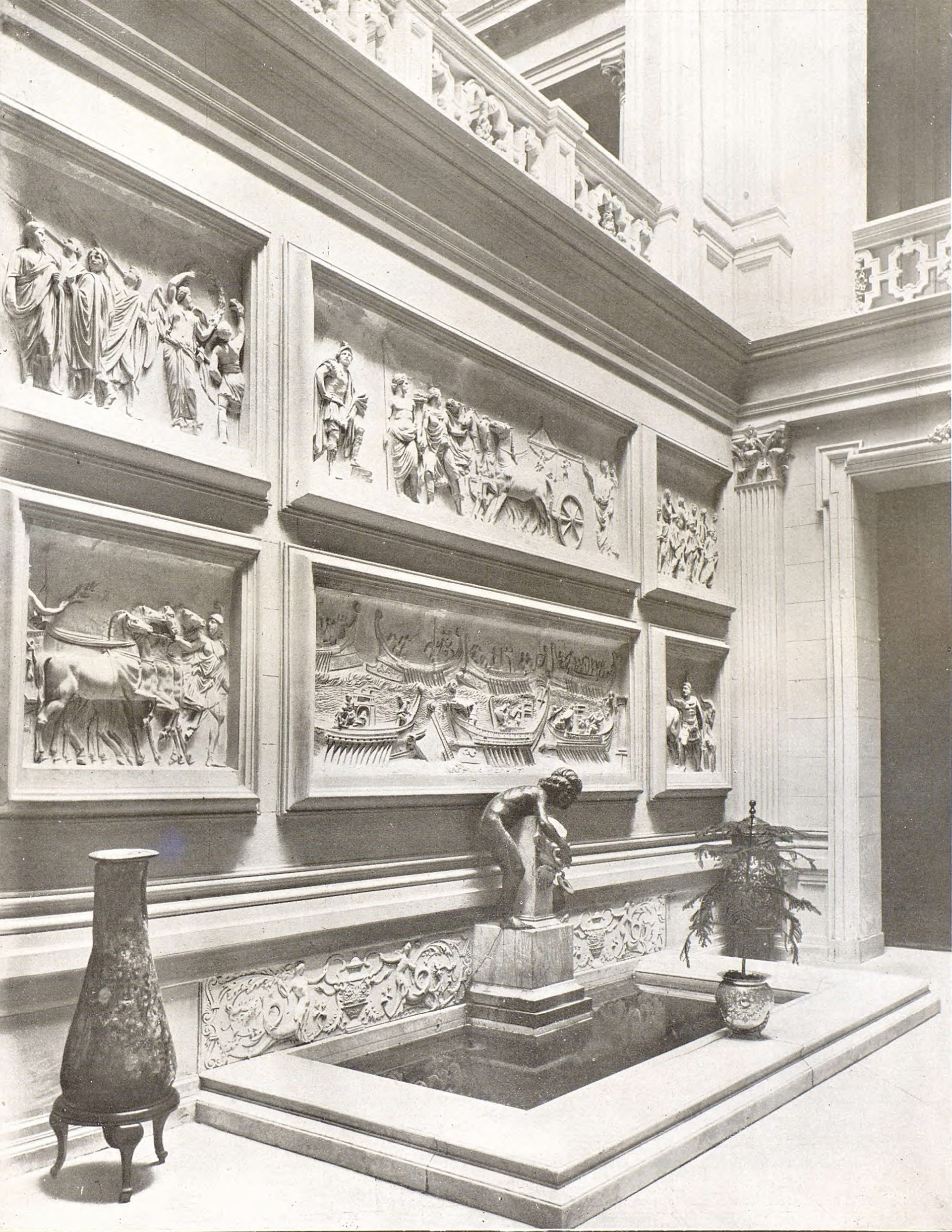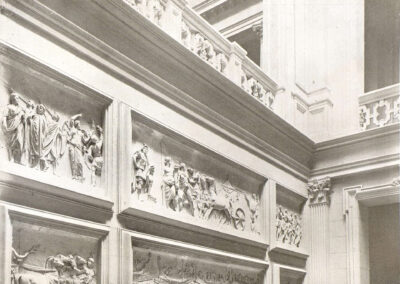This cycle of nine reliefs - historically and successively linked to the Houses of Alcalá and Medinaceli - which was dispersed in 1956 in the will of its 17th Duke, Luis Jesús Fernández de Córdoba, has aroused the interest of researchers since the beginning of the 18th century, as it was published in 1719 by the Benedictine Bernard de Montfaucon in his work Antiquity explained in figurespublished in Paris in ten deluxe volumes, with a print run of 1,800 copies, which quickly sold out, and a second reprint was launched the same year, in the preface of which the author cites this series as one of the great new additions. As Mantfaucon himself points out, he had received the drawings of the pieces from his friend, Manuel Martí, Dean of Alicante and former librarian to the IX Duke of Medinaceli, who in a letter to Gregorio Mayans dated 26 June 1733 said that "... the drawings of the pieces are the result of the work of his friend, Manuel Martí, Dean of Alicante and former librarian to the IX Duke of Medinaceli.I had most of them drawn exactly and Father Montfaucon printed them. [...] and confesses, in a letter in which he thanks me, that in all his collection there is no more precious monument than this one.".
It has mainly been German archaeology that has been most interested in these pieces, which have recently been studied by Markus Trunk and Thomas Schäfer, professors at the University of Trier and Tübingen respectively. The former in a more general way, in his study on the collection of the 1st Duke of Alcalá published in 2002, and the latter in a more specific way, as he has spent many years researching this series of the collection, a research published in 2022 in a large volume entitled Der Reliefzyklus Medinaceli: Von Actium bis Nero.
In this work, Thomas Schäfer dates the cycle to the Claudian period, classifies it, in terms of subject matter and visual language, within the genre of Roman state reliefs, considers that they belonged to a provincial monument that follows an existing model in the city of Rome, and deduces that its subject matter would revolve around an instrumentalisation of the recent history of the empire as a form of worship of the imperial family and of legitimisation of the emperor Claudius.
In the reconstruction of the monument, which he intuits could have come from Pozzuoli, the primitive Roman port of Puteoli, he distinguishes three friezes which, due to their compositional relationship, he considers likely to have been placed inside a temple or an altar: frieze A dedicated to the representation of the founding battle of the empire, the battle of Actium in 31 BC, in which his two grandfathers, Octavian and Mark Antony, took part; frieze B, which focuses on Claudius' triumph in the conquest of Britannia in 43 AD, an essentially naval operation which was mainly a naval operation that took place at the time of the conquest of Britannia.C, a fundamentally naval operation which signified the first territorial expansion of the empire since Augustus and a success for Claudius which had been denied to the founder of the Julio-Claudian dynasty, Julius Caesar, who had tried unsuccessfully to occupy the island; and the last frieze, C, in which the traditional pompa circensis becomes an exaltation of the peace achieved by the aforementioned dynasty since the beginning of the Principate.



